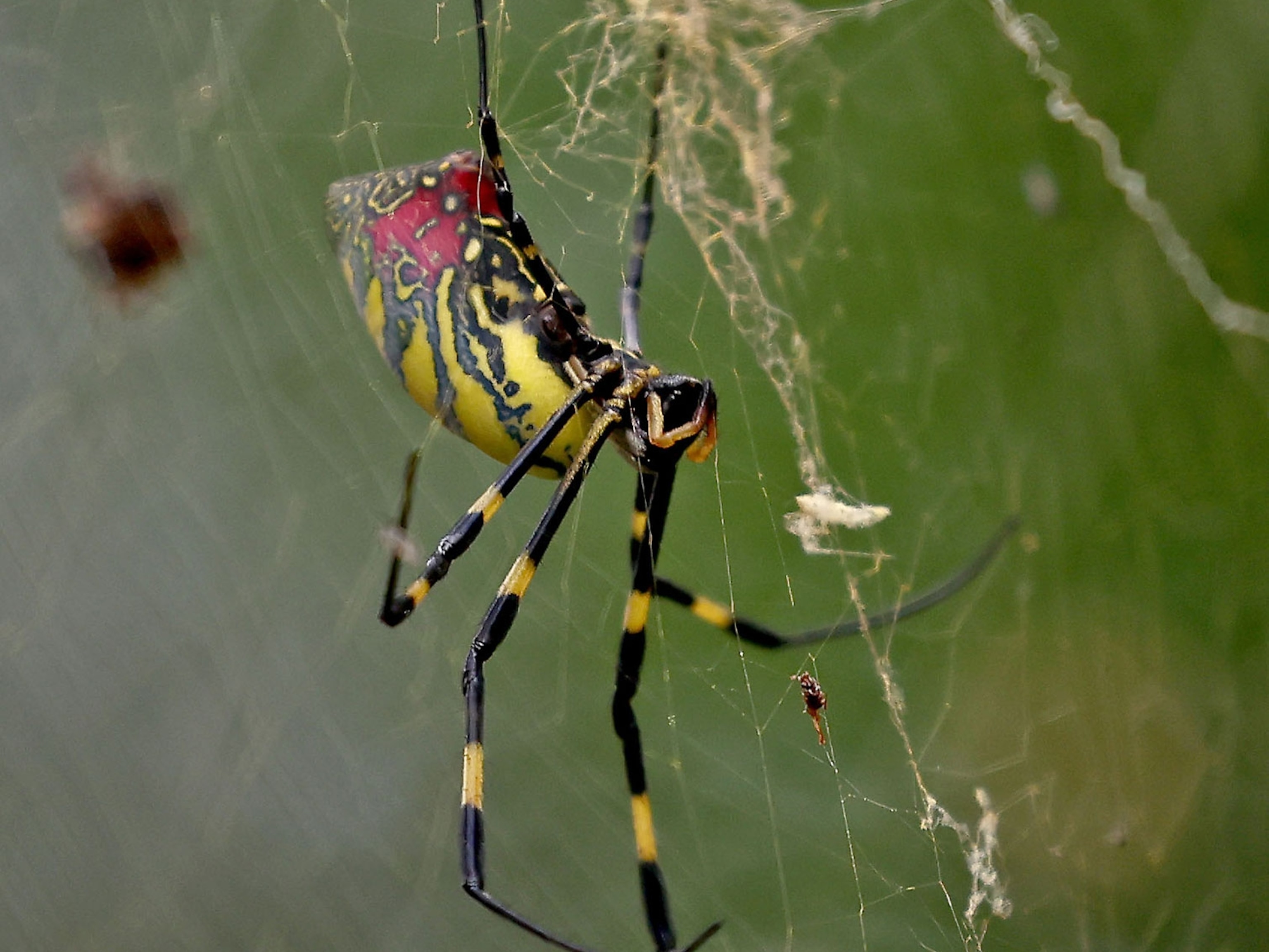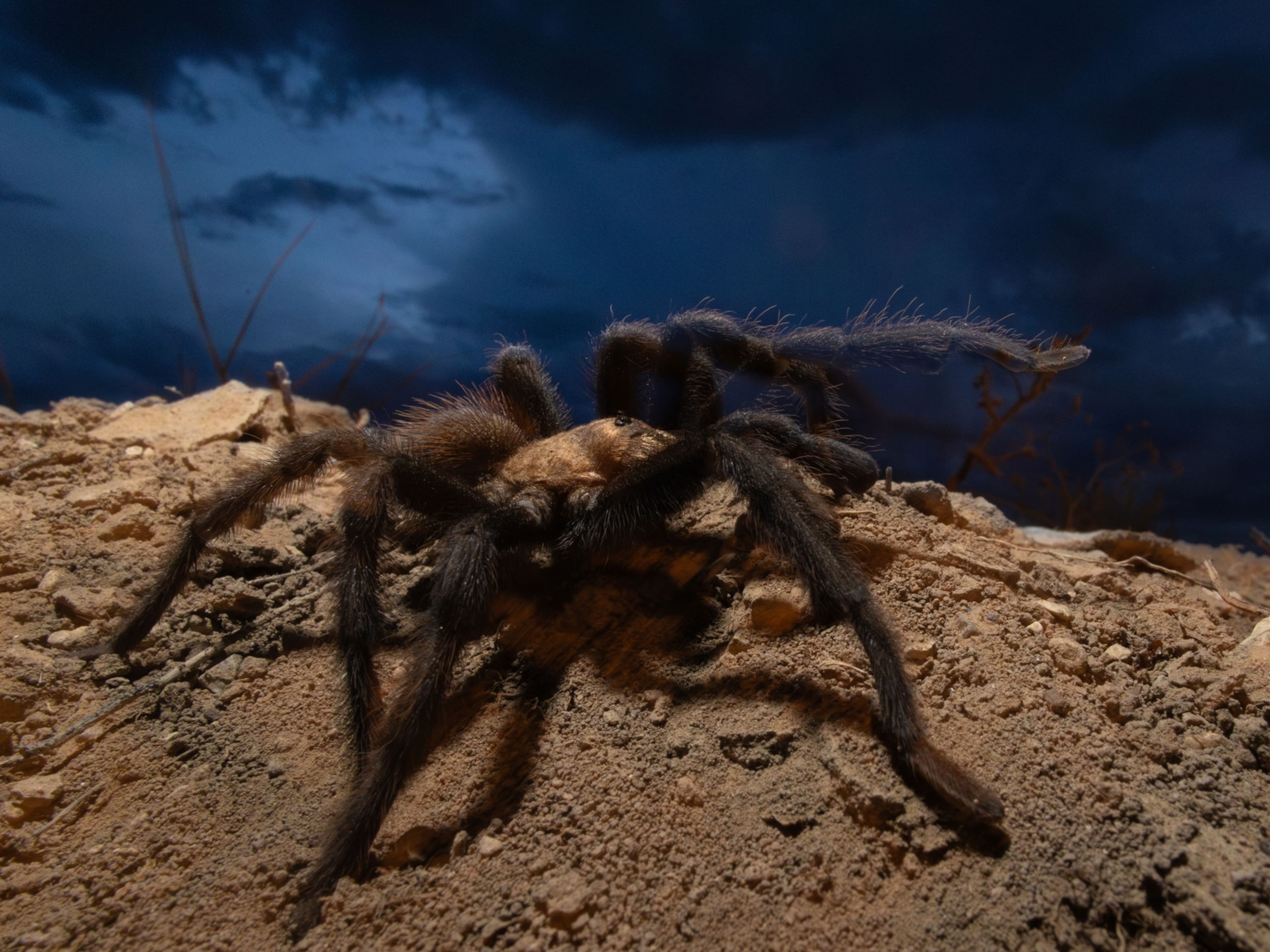
Asian "Fortune-Teller" Spider Found in U.S. for First Time
Nephila clavata, a large, orb-weaving arachnid, has taken up residence in northern Georgia, recent research shows.
An East Asian spider known for its colorful nicknames and strong, golden silk has moved into the U.S. state of Georgia—the first time the species has been recorded in North America.
A new study found that trees and shrubs in at least three counties in northern Georgia are now seasonally decorated with Nephila clavata's big, yellow webs. (See spider pictures on National Geographic's Your Shot.)
Scientists think the hand-size arachnids hitchhiked across the ocean as shipping stowaways and have been quietly living in the state for a few years.
In Japanese mythology, this species is considered a deceptive shape-shifter that preys on young, handsome men—hence its name jorō-gumo, which means "binding bride" or "whore spider." In Korea, the arachnid's name is mudang gumi, which translates to "shaman" or "fortune-teller" spider.
But in real life, so-called Joro spiders are not harmful to humans, and there's no evidence—at least not yet—that their presence has had a negative impact on U.S. ecosystems.
"It knocked my socks off, to some extent, when I saw the first image," says study leader E. Richard Hoebeke, curator of arthropods at the Georgia Museum of Natural History.
"I knew full well it wasn't anything that was among the native spider fauna in this area," said Hoebeke, who described the find in February in the journal PeerJ.
New Kid on the Block
Adult female N. clavata are spectacular sights, with striped legs and abdomens that appear as though they've been dipped in a pool of swirling yellow, red, and black paint. In contrast, the males are a relatively colorless brown, and like males throughout the Nephila genus, are dwarfed by the females.
Sometimes four times as big as the males, female N. clavata can reach up to 3 to 4 inches (7.6 to 10 centimeters) wide in their leg spans.
With such a striking appearance, it's not surprising that study co-author Wesley Huffmaster noticed one near his house in September 2014.
After that incident, Huffmaster, Hoebeke, and colleagues began looking for more such suspicious spiders. Over ten days, the team collected or spotted about a dozen Joro spiders and their tough webs in three counties—a wide distribution that suggests the spiders are successfully setting up shop on their new continent.
The team verified the critters' identities photographically and with DNA testing, which indicated that the Georgia spiders all came from the same source in China or Japan.
Spider Stowaways
As strange as it may seem, spiders have no problem hitching rides around the world.
"With international trade, spiders are hitchhiking all over the place," says Rick Vetter, who studies spiders at the University of California, Riverside. "They get in quite often."
With international trade, spiders are hitchhiking all over the placeRick Vetter, Researcher, University of California, Riverside
What is unusual—but not unheard of—is for spiders to establish populations at their destinations. When this happens, as with Steatoda nobilis in southern California, it's normally near large ports; but the Georgian counties are nowhere near a port.
Instead, study leader Hoebeke suspects that a shipment moving through the East Coast's busy I-85 corridor contained Joro egg sacs, which likely hatched spiderlings after the shipment arrived.
"Spiderlings of this particular group are really good dispersers because of the way they're able to spin a piece of silk," Hoebeke says. "It kind of acts like a parachute, if you will, and gets dragged by the prevailing wind currents."
Finding Joro
It's too soon to say how big the North American N. clavata population is and whether the spider is likely to compete with native species. The vibrant new arrival does have an American relative: Nephila clavipes, a golden silk orb weaver that's native to the southern U.S.
"I suspect it may be more widespread than what our data is initially indicating," Hoebeke says. "It could be anywhere where there are major importing warehouses."
Now, with winter waning and spring on the way, the spiders are about to emerge from their egg sacs. They'll grow over the next few months and be easiest to spot in late summer or early fall.
Hoebeke is hoping for some help in finding them.
"We can't be everywhere looking for this thing, but we can have people take a close look and let us know," he says.
"This is really citizen science at its best."
Follow Nadia Drake on Twitter.





